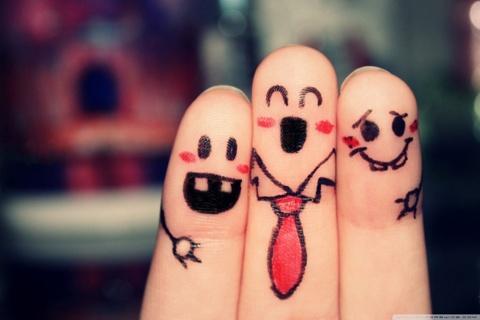
Early on in my practice, I often found deep peace in my alone time meditating, but I was disturbed to watch that peace become inaccessible when I went out into the world. Why couldn’t I stay in the present moment when I was with others? Why did I continue to repeat unhealthy patterns of behavior in my relationships? Why did I leave my interactions (some of them, anyway) feeling depleted instead of energized?
What I discovered was that I didn’t know how to connect well. I had learned meditation tools to keep me in balance when I was on my own, but I was still skipping over what is, perhaps, the most important emotional resource that humans have: co-regulation.
Co-regulation is the process by which two people come into emotional balance through attuning to one another (giving each other their attention) and allowing an empathetic connection to form (each person feeling the other’s emotions). Some people have an easier time with this than others. The better you are at it (and the better the people are with whom you are connecting) the more often you will find yourself balanced and energized through connection.
Personally, I realized I needed to improve my skill at this. I decided to try to bring the process of co-regulation, which is generally unconscious and automatic, into my awareness. I would go to parties (sober, mind you) and pay attention to my eye-contact. I’d keep some of my attention in my body, feeling for my emotional experience and that of the other person. And often, I’d get fried! I’d have trouble paying attention. I’d become tense and anxious. My body would fill with all the feelings that had kept me from doing this my whole life. Sometimes it would only be 15 minutes before I’d have to leave the gathering and go sit in my car, just to cool down.
It was frustrating and humbling to witness how difficult connecting was for me, but I just kept trying and it got a lot easier. Working with my emotions “on the cushion” helped me figure out how to hold them out in life. Life situations would illuminate feelings that I could go back and sit with. As my system started to tune into the nourishment that could come from connecting, the process naturally progressed. It wasn’t particularly complicated, but it took a lot of patience. Three years later, it still does.
For most of us, co-regulation informs who we spend time with. I started to ask who else in my life could do this well, and I prioritized those people in my social time. When I went to make new friends, I let the co-regulation process be part of the evaluation.
These days, I recognize the need to connect when I feel it, and I have very reliable people to connect with. As a result, life is more fulfilling, and I am more even-keeled. I also have fewer cravings than I used to, and I feel less blame and self-criticism. Why is that? Cravings and blameful thinking were among my habits to cover up the pain of disconnection, and as that pain has diminished, so have those coping strategies.
Humans are herd animals. We rely on each other. In our individualistic society, it’s easy to overlook this, but science has proven that our connections with one another are essential to keeping our emotions, and our physiology, in balance.
Certainly, we benefit when we can manage our own emotions well. My hope is that we don’t then jump to the false conclusion that we can do without one another. As I see it, meditation is a process that helps us meet the world more fully, not retreat from it. It takes time, and a lot of compassion, but the deepest reward of practice is its integration into life.
